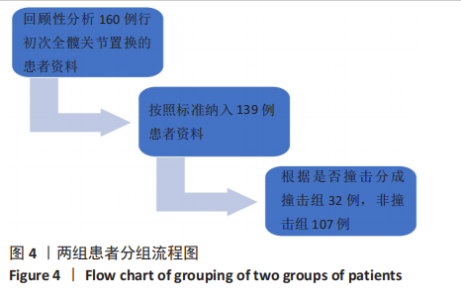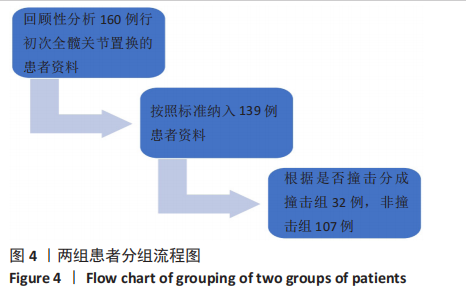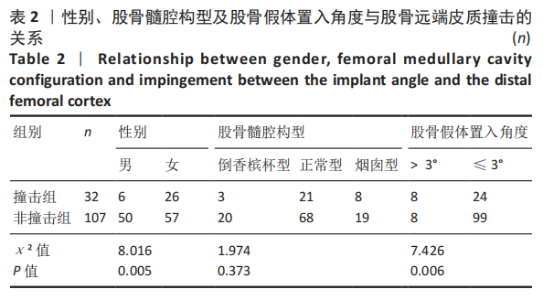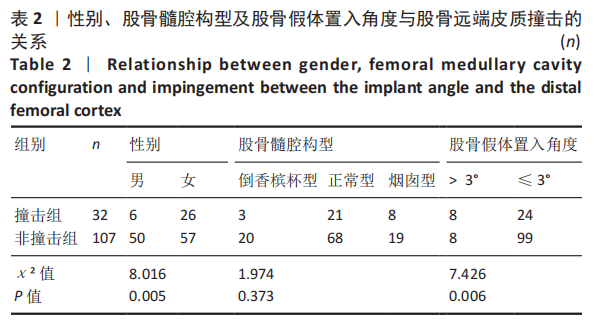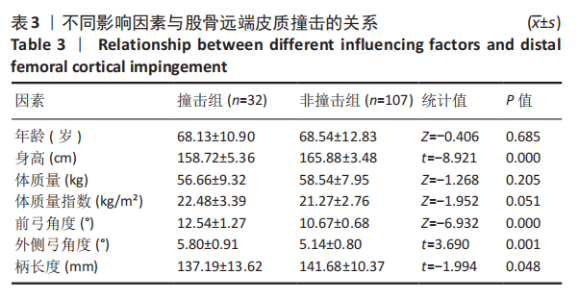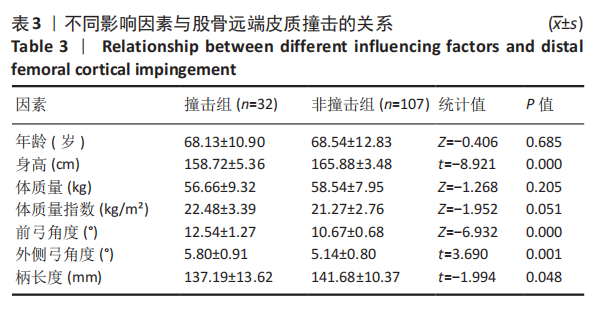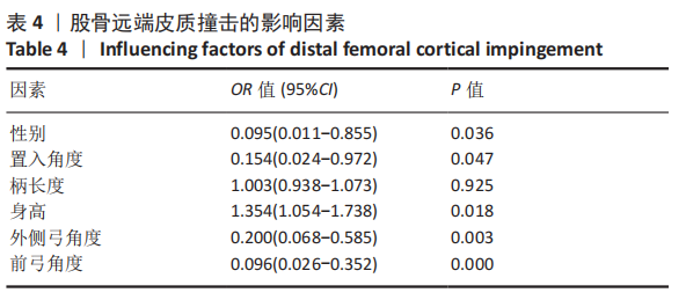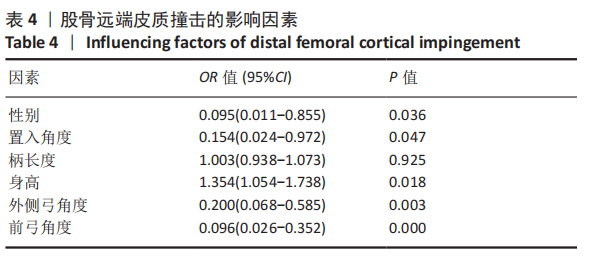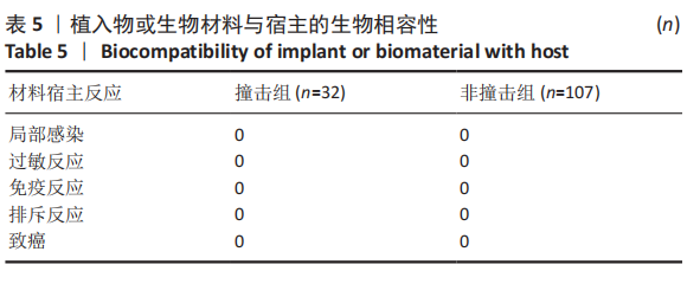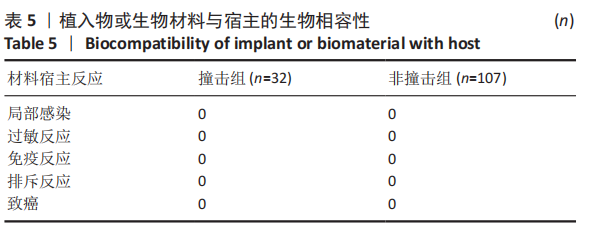[1] LASAM MP, LEE KJ, CHANG CB, et al. Femoral lateral bowing and varus condylar orientation are prevalent and affect axial alignment of TKA in Koreans. Clin Orthop Relat Res. 2013;471(5):1472-1483.
[2] YAU WP, CHIU KY, TANG WM, et al. Coronal bowing of the femur and tibia in Chinese: its incidence and effects on total knee arthroplasty planning. J Orthop Surg (Hong Kong). 2007;15(1):32-36.
[3] GALA L, CLOHISY JC, BEAULÉ PE. Hip Dysplasia in the Young Adult. J Bone Joint Surg Am. 2016;98(1):63-73.
[4] PEÑA OR, GÓMEZ GÉLVEZ A, ESPINOSA KA, et al. Cephalomedullary nails: factors associated with impingement of the anterior cortex of the femur in a Hispanic population. Arch Orthop Trauma Surg. 2015; 135(11):1533-1540.
[5] BAZYLEWICZ DB, EGOL KA, KOVAL KJ. Cortical encroachment after cephalomedullary nailing of the proximal femur: evaluation of a more anatomic radius of curvature. J Orthop Trauma. 2013;27(6):303-307.
[6] YOUNG EY, GEBHART J, COOPERMAN D, et al. Are the left and right proximal femurs symmetric? Clin Orthop Relat Res. 2013;471(5): 1593-1601.
[7] NOBLE P, ALEXANDER J, LINDAHL L, et al. The anatomic basis of femoral component design. Clin Orthop Relat Res. 1988;235:148-165.
[8] MULLAJI AB, MARAWAR SV, MITTAL V. A comparison of coronal plane axial femoral relationships in Asian patients with varus osteoarthritic knees and healthy knees. J Arthroplasty. 2009;24(6):861-867.
[9] TELOKEN MA, BISSETT G, HOZACK WJ, et al. Ten to fifteen-year follow-up after total hip arthroplasty with a tapered cobalt-chromium femoral component (tri-lock) inserted without cement. J Bone Joint Surg Am. 2002;84(12):2140-2144.
[10] TRISOLINO G, FAVERO M, DALLARI D, et al. Labral calcification plays a key role in hip pain and symptoms in femoroacetabular impingement. J Orthop Surg Res. 2020;15(1):86.
[11] YAO JJ, COOK SB, GEE AO, et al. What Is the Survivorship After Hip Arthroscopy for Femoroacetabular Impingement? A Large-database Study. Clin Orthop Relat Res. 2020;478(10):2266-2273.
[12] YOSHITANI J, KABATA T, KAJINO Y, et al. Anatomic stem inserted according to native anteversion could reproduce the native anterior distance of the femoral head and decrease bony impingement in total hip arthroplasty. Int Orthop. 2020;44(2):245-251.
[13] QIU J, KE X, CHEN S, et al. Risk factors for iliopsoas impingement after total hip arthroplasty using a collared femoral prosthesis. J Orthop Surg Res. 2020;15(1):267.
[14] SHETTY A, SHENOY PM, SWAMINATHAN R. Mismatch of long Gamma intramedullary nail with bow of the femur: Does radius of curvature of the nail increase risk of distal femoral complications? J Clin Orthop Trauma. 2019;10(2):302-304.
[15] ROBERTS JW, LIBET LA, WOLINSKY PR. Who is in danger? Impingement and penetration of the anterior cortex of the distal femur during intramedullary nailing of proximal femur fractures: preoperatively measurable risk factors. J Trauma Acute Care Surg. 2012;73(1):249-254.
[16] MARATT J, SCHILLING PL, HOLCOMBE S, et al. Variation in the femoral bow: a novel high-throughput analysis of 3922 femurs on cross-sectional imaging. J Orthop Trauma. 2014;28(1):6-9.
[17] THIESEN DM, PRANGE F, BERGER-GROCH J, et al. Femoral antecurvation-A 3D CT Analysis of 1232 adult femurs. PloS One. 2018; 13(10):e0204961.
[18] SU X, ZHAO J, ZHAO Z, et al. Three-Dimensional Analysis of the Characteristics of the Femoral Canal Isthmus: An Anatomical Study. Biomed Res Int. 2015;2015:459612.
[19] SUKSATHIEN Y, SUEAJUI J. Mid-term results of short stem total hip arthroplasty in patients with osteonecrosis of the femoral head. Hip Int. 2019;29(6):603-608.
[20] AMENDOLA RL, GOETZ DD, LIU SS, et al. Two- to 4-Year Followup of a Short Stem THA Construct: Excellent Fixation, Thigh Pain a Concern. Clin Orthop Relat Res. 2017;475(2):375-383.
[21] GIELIS W, VAN OLDENRIJK J, TEN CATE N, et al. Increased Persistent Mid-Thigh Pain After Short-Stem Compared With Wedge-Shaped Straight-Stem Uncemented Total Hip Arthroplasty at Medium-Term Follow-Up: A Randomized Double-Blinded Cross-Sectional Study. J Arthroplasty. 2019;34(5):912-919.
[22] 姚长海, 侯树勋, 王富, 等. 国产髋关节人工假体置换术后生存率的远期随访[J]. 中国矫形外科杂志,2004,12(15):4-8.
[23] 刘宏伟, 蒋俊锋, 张云坤, 等. 金属3D打印个性化股骨假体和4种类型标准化假体的生物力学对比[J].中国组织工程研究,2019, 23(32):5151-5157.
[24] GRAMMATOPOULOS G, PANDIT HG, DA ASSUNÇÃO R, et al. The relationship between operative and radiographic acetabular component orientation: which factors influence resultant cup orientation? Bone Joint J. 2014;96-b(10):1290-1297.
[25] 邵建树, 厉晓龙, 刘伟峰, 等. 全髋关节置换中臼杯放置角度对关节屈伸活动安全性的影响[J]. 中国组织工程研究,2015,19(44): 7053-7058.
[26] PEÑA OR, GÓMEZ GÉLVEZ A, ESPINOSA KA. Clinical implications of impingement of the anterior femoral cortex after cephalomedullary nailing. Injury. 2016;47(10):2300-2306.
[27] BOESE CK, DARGEL J, JOSTMEIER J, et al. Agreement Between Proximal Femoral Geometry and Component Design in Total Hip Arthroplasty: Implications for Implant Choice. J Arthroplasty. 2016;31(8):1842-1848.
[28] OH KJ, IMRIE S, HWANG K, et al. Total hip arthroplasty using the miniature Anatomic Medullary Locking stem. Clin Orthop Relat Res. 2006;447:85-91.
[29] BROWN TE, LARSON B, SHEN F, et al. Thigh pain after cementless total hip arthroplasty: evaluation and management. J Am Acad Orthop Surg. 2002;10(6):385-392.
[30] PIERANNUNZII LM. Thigh pain after total hip replacement: a pathophysiological review and a comprehensive classification. Orthopedics. 2008;31(7):691-699; quiz 700-701.
|
